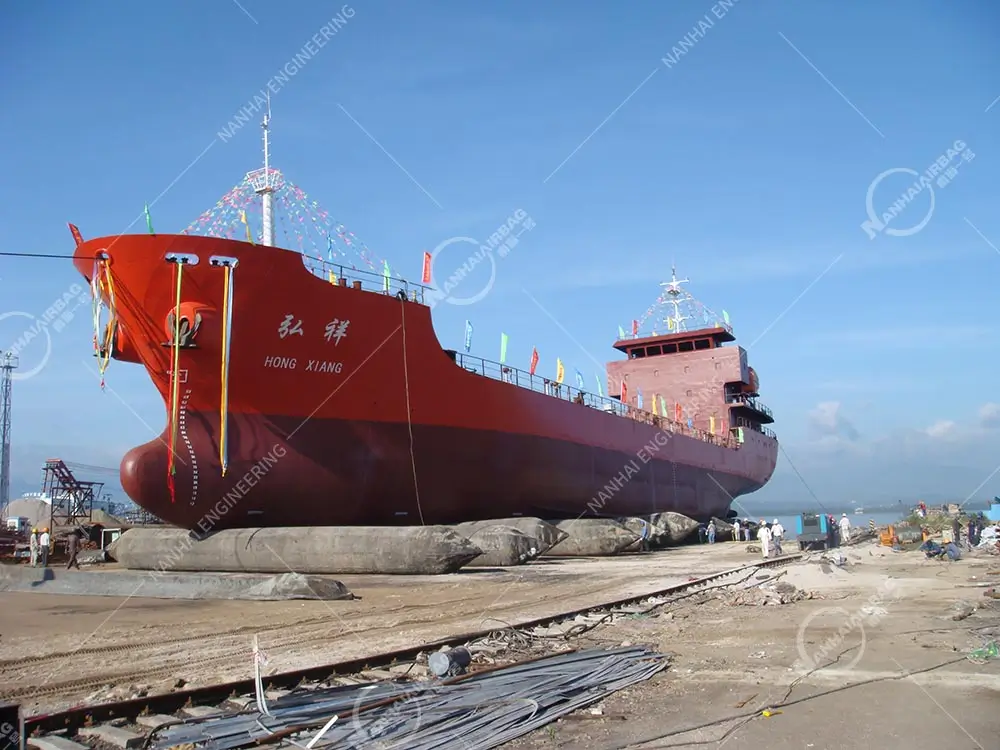Precautions for Ship Launching Airbags
06/13/2025Characteristics of Wrapped Pneumatic Rubber Fenders
06/13/2025Selection Of Ship Launching Airbags
When it comes to choosing the right ship launching airbags, many people are unsure where to start. This decision directly impacts the safety, stability, and cost-efficiency of your ship’s launch or heavy lifting process. If you select the wrong airbags, you may put your ship at risk of damage, or even compromise the safety of your team. So, choosing carefully is crucial.

What Are Ship Launching Airbags?
Marine airbags — also called ship airbags or marine rubber airbags — are heavy-duty, flexible, rubber cylinders used for launching, lifting, or moving ships. They enable you to ease a ship into the water safely or move heavy structures with minimum stress. The ability to do this efficiently can make a huge financial and operational difference for a shipyard.
How to Select Ship Launching Airbags
Size — Diameter (D)
Usually, we select 1.5 m-diameter airbags for standard ship launches. If your ship’s blocking stands are higher, you can choose larger diameters, such as 1.8m or 2m. Small ships typically use 1.2m or even 1 m-diameter airbags.
Effective Length (Le)
Effective length refers to the length of the cylindrical section, not including the cone-shaped heads.
- If your ship’s width is 20m or less, normally, the effective length should be equal to the width of your ship. If your airbags aren’t long enough, you can use them in a cross configuration.
- If your ship’s width is greater than 20m, you typically need to connect two marine airbags in a row or arrange them in a cross configuration to account for the larger width.
Airbag Model
Selecting the proper airbag model is very important:
- If your ship’s self-weight is less than 1000 tons, we normally select P-series airbags.
- If your ship’s self-weight is greater than 1000 tons, we normally select S-series airbags.
- If you need higher pressure resistance, the Beenest-series airbags are a reliable choice.
Number of Airbags (N)
The number of airbags placed under your ship is made up of the main airbags (N1) plus spare ones (N2).
Usually:
N1 = (Ship’s weight in ton, G) ÷ (Carrying capacity per airbag × effective length L)
N2 (backup) is decided by your actual operational conditions.
NANHAI Marine Rubber Airbags
Selecting the right marine airbags can make your ship’s launch safer, faster, and more cost-effective. Our team of experts is here to help you identify the perfect match for your project. Contact us today for a customized solution that guarantees your ship’s smooth delivery into the water.
People Also Ask
What size of ship airbag should I select for my ship?
Usually, for standard ship launching, we select 1.5m-diameter airbags. If your ship’s blocking stands are higher, you can choose 1.8m or even 2m-diameter airbags. Small ships typically use 1.2m or 1m-diameter airbags.
How much pressure can a marine rubber airbag hold?
The pressure a marine rubber airbag can hold depends on its model and material. P-series typically suit ships under 1000 ton, S-series for over 1000 ton, while Beenest-series can handle higher pressures for heavy-load operations.
Are ship airbags reusable and repairable?
Yes — ship airbags are reusable and repairable when they’re well maintained and kept in good condition. Small punctures or abrasions can often be patched, extending their service life.
What’s the difference between ship airbags and marine rubber airbags?
Ship airbags are a kind of marine rubber airbag. The main difference lies in their application — ship airbags are designed to aid in launching or lifting ships, while marine rubber airbags may be used for other heavy lifting or salvaging operations in marine environments.
How do I safely launch a ship using airbags?
To safely launch a ship with airbags, you should first select the appropriate size, number, and pressure of the airbags and arrange them evenly under the hull. Always follow safety guidelines and operational procedures, and make sure there’s a team of trained personnel on site to oversee the process.
